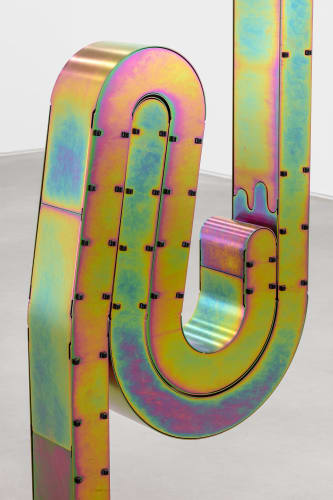LUCAS SIMÕES . OTIUMmuitoOTIUM
Past exhibition
Installation Views
Overview
In ancient Rome the word otium had an ambiguous meaning. It might be used to refer to a pause, a time for reflection, or even laziness. It’s antonym, negotium likewise meant both action, and an involvement in politics or public life.
Casa Triângulo is pleased to announce an exhibition of new work by Brazilian artist Lucas Simões that asks how moments of pleasure and hedonism, rest and action, and the transition between the two, might be captured and enacted materially. Working with poured concrete and welded steel, Simões’s sculptures stem from a series of visits the artist made to the excavations of Pompeii’s ancient leisure villas, places of otium on outskirts of the ancient city (c. I BC - I AD), in which the architecture was specifically created to provide space for relaxation and intellectual contemplation, a space to prepare the Roman elite for their civic service.
Like Rome at leisure, in a variety of wall- and floor-based sculpture the blocks of contrasting material drape and wrap themselves around each other; metal in seductive embrace of pigmented concrete, concrete reclining over metal. The colours are calm and languid, recalling the faded frescos the artist saw at the Stabiae. In Sleepers, a series, there is a sense of eroticism and sensuality. The polished metal surfaces curve and flick like a tongue, the smooth concrete hangs pendulously, as if the sculptures are rising up, stimulated, from a slumber. In a second body of work, Corpos de Prova, Simões returns to his use of paper as a sculptural material, the piles of writing material hanging, wedged between two opposing, moveable geometric blocks, taking on different forms depending on how the ballasts at either end are placed. This proposed kineticism evokes a sense of socialiability, the objects negotiating ways in which the viewer might live and relate to them. Negotium in action.
With his original architectural training Simões brings across the idea of design as an active agent: material possessing an ability to determine behaviour. The artist speaks of his sculpture in almost sentient terms, both products of desire and as machines in the production of desire. From their repose in the studio, they now take to public life in the gallery.
by Oliver Basciano


